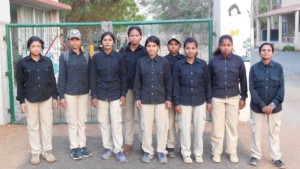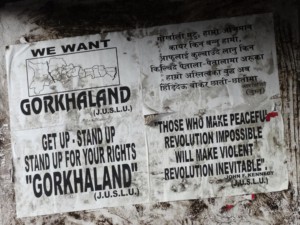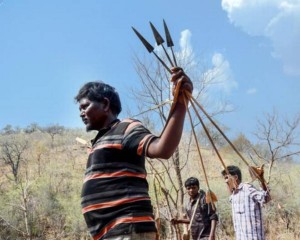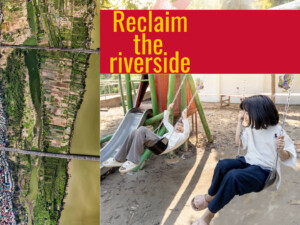Ownership, inclusion key to community-based tourism
![Ownership, inclusion key to community-based tourism 1 By Christopher Michel (https://www.flickr.com/photos/cmichel67/8273723151) [CC BY 2.0 (http://creativecommons.org/licenses/by/2.0)], via Wikimedia Commons](https://www.goodtourismblog.com/wp-content/uploads/2017/06/Myanmar_farmer_in_longyi.jpg)
The main reasons for failure are “top-down approach by development partner and/or private sector partner in which the needs and ideas of the community are not taken into consideration”, followed by “lack of mobilisation and involvement of the community”, and “an unstable political situation”.
This is according to a poll of participants at the second Communities and Tourism Conference in Nay Pyi Daw, June 13 – 14, organised and hosted by the Myanmar Centre for Responsible Business (MCRB), Myanmar Responsible Tourism Institute (MRTI) and Hanns Seidel Foundation (HSF).
These findings highlight the need for communities “to be interested and active in owning the tourism products they put on the market”.
Six community tourism initiatives – Myaing, Indawgyi, Pa‑O region, Kayah State, Upper Ayeyarwady dolphin project, and Thandaunggyi – related their successes since the last event in December 2015.
They had all seen a growth in visitors, including domestic travellers, and some increases in income from tourism. Nevertheless, their largest challenge was marketing their products.
Other challenges cited included “continued restrictions on access and overnight stays by foreigners which reduced local earning potential, lack of skilled human resources, and lack of local knowledge about what foreign tourists want and how they behave”.
All the projects highlighted the importance of promoting environmental awareness, and “protecting and building pride in and knowledge of local culture which was particularly interesting to foreign visitors”.
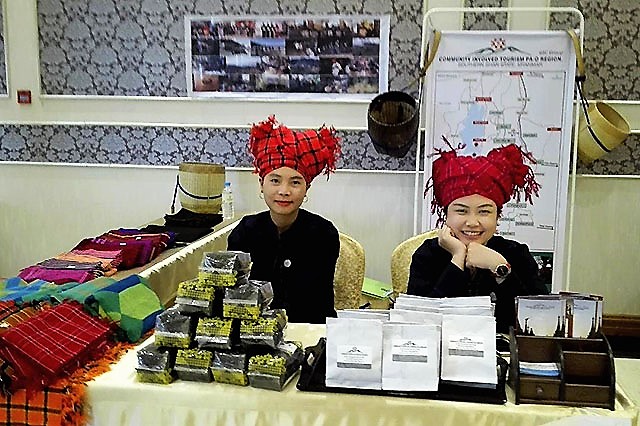
PaO community-involved tourism stall at Communities and Tourism Conference. Source: MCRB
Participants expressed optimism about Myanmar’s CBT potential. New destinations and products discussed included “Myeik archipelago and Lampi Island, trekking in Danu regions in Shan State, Ngayokekaung, Gwa, tours in the Yangon area, Tamarind Lake Village near Sale, and Bagan area”.
Dr Nicole Haeusler, adviser to GIZ and MRTI, explained that “community-based tourism (CBT)” tended to involve tours and overnight stays whereas “community-involved tourism (CIT)” could be regarded as CBT plus the community producing items for the tourism supply chain, such as food, furnishings, and souvenirs.
The “GT” Blog would call this “inclusive tourism” (see the “GT” Glossary). Thoughts?
Whatever terminology is used, the important good tourism principle to be learned from the event is that genuine community participation and entrepreneurship is needed for the sustained success of tourism within communities.Top-down approaches are more likely to fail.
MCRB Director Vicky Bowman said: “We need to recognise is that community tourism is a business.
“NGOs can be very helpful to get a project started. But the most sustainable community tourism initiatives are the ones driven by the natural entrepreneurs in the local community. They may be producing local food and souvenirs for a nearby tourism hub, or they may be running a small restaurant, guesthouse or adventure activity.
“For those entrepreneurs to be successful, the government needs to understand their challenges, including how they are hindered by unnecessary red tape, and make it easy for them to innovate and grow”.
Source: This post is based on a summary of the event by co-host MCRB.
Featured image: Farmer with two buffalo. By Christopher Michel CC BY 2.0 via Wikimedia Commons
Download
Results of polling at the Communities and Tourism Conference. (hosted offsite)
Related posts


